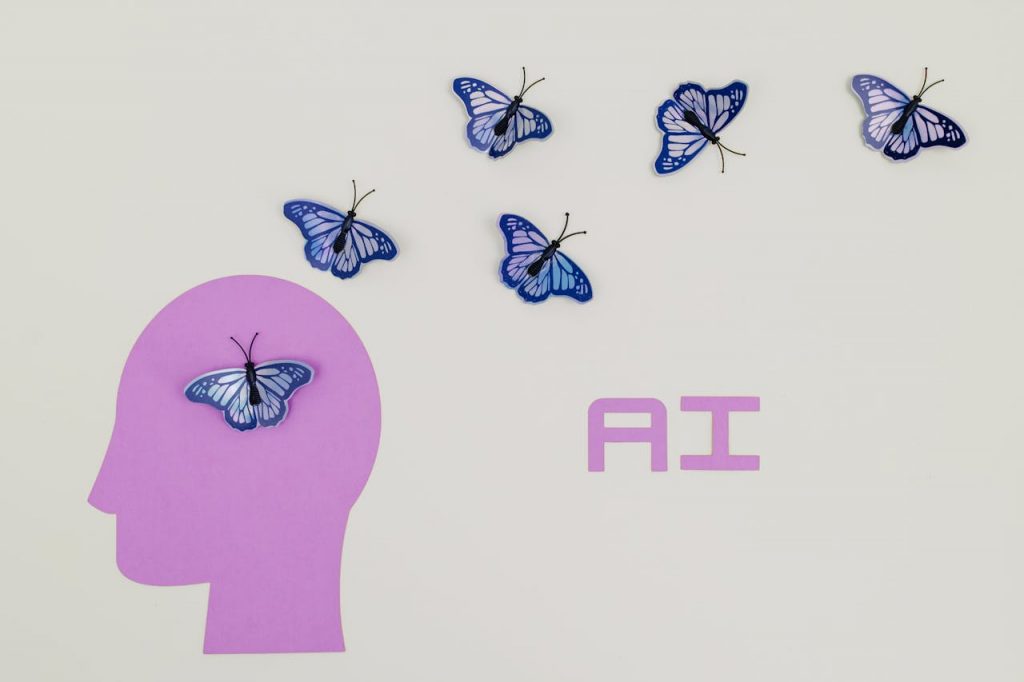Imagine a system that can create entirely new images, music, or even text, all by learning from existing data. This is the power of GANs—a cutting-edge technology that is reshaping the landscape of AI and pushing the boundaries of what machines can achieve.

At the heart of this technology lies a fascinating interplay between two components: the generator and the discriminator. These two entities are engaged in a constant game of improvement, where one generates new data and the other evaluates its authenticity. This adversarial relationship drives the system to refine its outputs, resulting in creations that are increasingly realistic and sophisticated.
In this article, we will demystify GANs by breaking down their core concepts and explaining how they function. We’ll provide you with a clear understanding of GANs and their impact on the digital world.
What is a Generative Adversarial Network (GAN)?
Generative Adversarial Networks (GANs) are a sophisticated class of artificial intelligence systems designed to create new and original content that mirrors existing data. At their core, GANs consist of two key components: the generator and the discriminator.
These two components engage in a dynamic process where the generator and discriminator continuously improve through their interactions. The generator strives to create data that can fool the discriminator, while the discriminator aims to become better at distinguishing between real and generated data.
In essence, GANs enable the creation of new data that is highly similar to existing data, making them a powerful tool in various applications such as generating images, composing music, and simulating data for research.
How Does a Generative Adversarial Network (GAN) Work?

We’ve mentioned how GANs are composed of two key components: the generator and the discriminator. Now, let’s dive into a detailed look at how these two interact with each other to produce high-quality, realistic data.
1. The Generator: Creating New Data
The generator is the creative force behind a GAN. Its primary function is to produce new data that mimics real data. Here’s how it works:
- Starting Point: The generator begins with random input, often called noise. This input is essentially a blank slate that provides no meaningful information initially.
- Generating Output: Using this random input, the generator applies a series of mathematical transformations to create an output. For instance, if the GAN is trained to generate images, the output might be a synthetic image of a cat or a landscape.
- Learning to Improve: Over time, as the generator receives feedback from the discriminator, it adjusts its parameters to improve the quality of the data it generates. The goal is to create outputs that are as realistic as possible, making it difficult for the discriminator to tell them apart from genuine data.
2. The Discriminator: Evaluating Authenticity
The discriminator acts as the evaluator, assessing the data produced by the generator to determine its authenticity. Here’s its role:
- Receiving Data: The discriminator is presented with both real data (e.g., actual images of cats) and fake data created by the generator.
- Making Judgments: It analyzes the input data and decides whether each piece is real or generated, using various features and patterns to make its assessment.
- Providing Feedback: Based on its evaluation, the discriminator provides feedback to the generator. If it identifies a generated image as fake, it helps the generator learn what improvements are needed.
3. The Adversarial Process: The Feedback Loop
The core of GANs is the adversarial process, where the generator and discriminator are in a constant state of competition:
- Game of Improvement: The generator aims to create data that can fool the discriminator, while the discriminator strives to become better at detecting fake data. This competitive dynamic drives both networks to enhance their performance.
- Iterative Training: This process is iterative and continues over many cycles. Each time the generator produces new data, the discriminator evaluates it and provides feedback. The generator uses this feedback to refine its output, and the discriminator adjusts its criteria for detecting fake data.
- Achieving Balance: The goal is for the generator to reach a point where its outputs are so realistic that the discriminator cannot reliably distinguish them from real data. Conversely, the discriminator should be robust enough to detect subtle differences.
4. Training Process: How GANs Learn
Training a GAN involves a series of steps that ensure both the generator and discriminator improve over time:
- Initialization: Both networks start with random weights and biases.
- Forward Pass: The generator creates data from random input, and the discriminator evaluates this data alongside real data.
- Loss Calculation: The discriminator calculates a loss value based on its ability to correctly classify data. The generator also computes a loss based on how well it managed to fool the discriminator.
- Backpropagation: Both networks use backpropagation to adjust their weights based on the loss values. This process involves updating the parameters to minimize errors and improve performance.
- Iteration: This training loop repeats many times, with each iteration helping the networks get better at their respective tasks.
This intricate process of generation, evaluation, and feedback allows GANs to create highly realistic and convincing data. By continuously refining their outputs and assessments, GANs can produce content that closely resembles real-world data, making them a powerful tool in the field of artificial intelligence.
How are GANs Used in AI?
Generative Adversarial Networks (GANs) are transforming various fields of artificial intelligence (AI) with their ability to create and simulate new data. Here’s a snapshot of how GANs are applied in AI:
- Image Generation: GANs are widely used to generate high-quality images from scratch. They can create photorealistic images, design artwork, and even generate new faces that don’t exist. This technology powers applications in entertainment, fashion, and gaming by producing unique visual content.
- Text and Speech Synthesis: GANs contribute to generating realistic text and speech. They can create coherent text passages and synthesize human-like voices, enhancing natural language processing applications and providing more lifelike interactions in virtual assistants and chatbots.
- Data Augmentation: In AI research, GANs are used to generate synthetic data, which helps in training other machine learning models. By creating diverse datasets, they improve model performance and accuracy, especially when real data is scarce or hard to obtain.

- Video Creation and Editing: GANs are applied to generate new video content and enhance existing footage. They can be used for tasks such as video prediction, style transfer, and creating deepfake videos, impacting industries like film production and content creation.
- Medical Imaging: In healthcare, GANs assist in generating medical images for training diagnostic models. They help in creating enhanced imaging data for better disease detection and improving the quality of medical scans, thus aiding in more accurate diagnoses.
- Creative Applications: GANs foster innovation in creative fields by generating original art, music, and design. Artists and musicians use them to explore new creative directions and produce novel content that blends human creativity with machine intelligence.
These applications illustrate the versatile and transformative impact of GANs across various sectors, driving advancements in technology and enhancing the capabilities of AI systems.
Dive Deeper into GANs and AI Advancements
Generative Adversarial Networks (GANs) represent a groundbreaking advancement in artificial intelligence, enabling the creation of highly realistic and innovative content across various domains. From generating lifelike images and text to enhancing medical imaging and fueling creative endeavors, they are pushing the boundaries of what AI can achieve.

As the technology continues to evolve, their applications will undoubtedly expand, further transforming industries and driving technological progress. Read AI-Pro’s AI terms glossary to discover how AI is redefining our world and stay informed about the latest developments in artificial intelligence.




